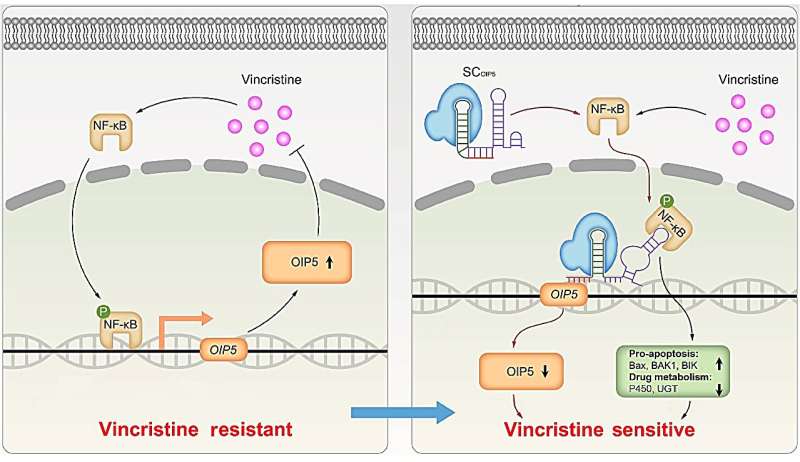This article has been reviewed according to Science X's editorial process and policies. Editors have highlighted the following attributes while ensuring the content's credibility:
fact-checked
trusted source
proofread
From resistance to resilience: Reprogramming drug resistance signals with an artificial gene circuit device

In clinical practice, drug resistance poses a significant challenge in cancer treatment. The process of developing resistance is regulated by complex decision-making pathways and genetic signal networks. The cross-redundancy and compensatory mechanisms between different pathways limit the effectiveness of interventions against drug resistance.
A recent study has shed light on this challenge, particularly in the context of bladder cancer treatment. The researchers discovered that after receiving the chemotherapy drug vincristine, bladder cancer cells experienced significant activation of a critical nuclear transcription factor known as NF-κB. This activation, in turn, led to an upregulation of the drug-resistance gene OIP5, rendering the cancer cells less responsive to vincristine.
The team developed an engineered artificial gene circuit device to modulate the process of drug resistance. This device remains inactive when tumor cells have not yet produced a drug resistance signal (activation of NF-κB). However, once the NF-κB is activated, the device automatically switches to an active state, promptly initiating intervention in downstream OIP5.
"This device helps to automatically monitor and intervene when drug resistance signals appear during chemotherapy. It ensures that resistance doesn't develop right from the start, leading to an effective treatment with no occurrence of drug resistance," says Dr. Weiren Huang (Shenzhen Institute of Translational Medicine, the First Affiliated Hospital of Shenzhen University), who led the study
By utilizing the artificial NF-κB/OIP5 gene circuit device, a new connection can be established between drug resistance signals and effector genes in the process of tumor response to chemotherapy. When vincristine activates NF-κB, the artificial gene circuit device initiates the downregulation of downstream drug-resistant gene OIP5 by binding to NF-κB, reversing the upregulation effect of NF-κB on OIP5.
Simultaneously, their competitive binding also blocks the activation of other NF-κB-mediated drug resistance pathways, including anti-apoptosis and drug metabolism pathways. This dual intervention successfully transforms the original drug resistance signal of NF-κB into a signal that inhibits resistance. By utilizing NF-κB as an indicator signal for drug resistance, this strategy enables timely intervention in tumor drug resistance, ultimately improving the anti-tumor efficacy of vincristine.
To allow the artificial gene circuit devices to better enhance the anti-cancer efficacy of vincristine, researchers further developed cationized albumin nanoparticles to co-deliver both to tumor cells. In all the treatment experiments tested, including vincristine-resistant cell lines, human-derived tumor organoids, and mouse models, the artificial NF-κB/OIP5 gene circuit device proved to significantly reduce bladder cancer resistance to vincristine.
Considering that the NF-κB/OIP5 pathway is not the sole factor influencing tumor resistance, the research team plans to further test additional resistance signals and drugs to validate the universality of this combination therapy strategy.
More information: Binbin Zheng et al, Engineering redirected NF-κB/OIP5 expression programs to enhance tumor responses to chemotherapy in bladder cancer, Science Bulletin (2023). DOI: 10.1016/j.scib.2023.11.027



















